









PEAK SEASON: ARIZONA’S PREMIER SUMMER CELEBRATIONS
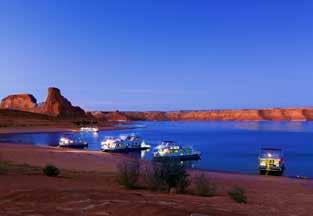
AZURE OASIS: THE MAJESTY OF LAKE POWELL & GLEN CANYON


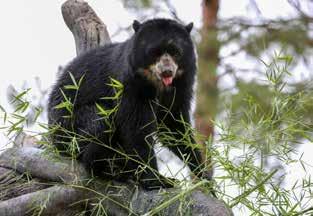
DESERT MENAGERIE: ARIZONA’S PREMIERE WILDLIFE EXPERIENCES


Publisher Shelly Spence
Managing Editor Joseph J. Airdo
Graphic Designer
Meaghan Mitchell
Contributing Writers
Joseph J. Airdo
Amanda Christmann
Francine Coles
Rebecca L. Rhoades
Shannon Severson
Photographers
Francine Coles
Loralei Lazurek
Advertising Sales
Cindi Calcinari
860-966-3271
cindi@imagesaz.com
Images Arizona P.O. Box 1416
Carefree, AZ. 85377
623-341-8221
shelly@imagesaz.com imagesarizona.com

As the mercury rises and summer settles across our sun-baked landscape, Arizona reveals a different kind of magic — one that beckons exploration beyond the familiar. This special collector’s edition of Images Arizona marks the first installment of our ultimate Arizona travel guide, inviting you to discover the extraordinary tapestry of experiences our state has to offer.
Arizona in summer is a study in contrasts. While the valleys shimmer with heat, our northern highlands offer cool pine-scented respite. While tourists flock to well-trodden destinations, countless hidden treasures await just off the beaten path — places where the true character of our state unfolds in whispers rather than shouts.
In these pages, we’ve assembled a collection of summer excursions ranging from the adrenaline-pumping to the delightfully eccentric. We venture beyond postcard panoramas to uncover the small-town celebrations, tucked-away swimming holes, family-owned eateries and quirky roadside attractions that give Arizona its distinctive personality.
From Flagstaff’s vibrant festival scene to Sedona’s lesser-known trails, from Prescott’s historic haunts to the surprising cultural gems of rural communities, this issue serves as your passport to Arizona’s summer splendor. We’ve sought out experiences that will surprise even longtime residents — proving that after all these years, our magnificent state still holds secrets worth discovering.
I encourage you to keep this issue close at hand throughout the summer and beyond — dog-eared, annotated and well-loved. We’ve designed it not as a fleeting read but as a perennial resource to inspire countless adventures. This is merely part one of our journey — watch for our August-September issue, which will complete this keepsake collection exploring Arizona’s remarkable destinations.
Here’s to summer roads less traveled and stories worth sharing!
Happy exploring,
Shelly Spence Publisher, Images Arizona



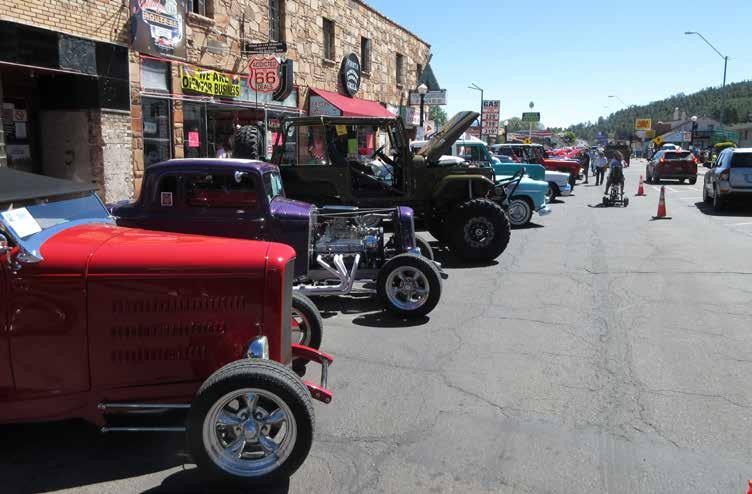
AArizona’s mountain towns and high-elevation destinations come alive in summer with festivals and celebrations that offer perfect escapes from desert heat. From classic car shows and bluegrass gatherings to world-class rodeos and renowned birding festivals, these signature events showcase the state’s diverse cultural heritage in stunning outdoor settings. Mark your calendars for these unforgettable experiences that promise adventure and entertainment this summer.
The iconic town of Williams transforms into an automotive wonderland as hundreds of meticulously restored classics and custom hot rods line Historic Route 66. This beloved showcase draws more than 500 vehicles and thousands of enthusiasts to the cool pines of northern Arizona. Special guest “Horny Mike” from TV’s “Counting Cars” makes an appearance Friday, while participants enjoy a festive “Burger Burn,” the popular “Cruise the Loop” parade featuring this year’s “Classic Generations” theme, and a spirited live auction benefiting American Legion Cordova Post 13. Free. 7 a.m.–10 p.m. Downtown Williams, Historic Route 66, Williams. williamshistoricroute66carshow.com

Wheeler Park transforms into a vibrant wonderland during Flagstaff’s beloved summer kickoff celebration. This extravaganza pulses with live music headlined by Orkesta Mendoza’s Latin rhythms and The California Honeydrops’ soulful grooves. Signature spectacles include a whimsical bicycle parade, towering puppet procession and creative costume contest. Children discover a dedicated area with hands-on activities, while vendors create a marketplace of tempting foods and artwork. The event benefits three local nonprofits — savvy attendees score free admission by being among the first 250 each day to donate nonperishable items. $15+. 10 a.m.–9 p.m. Saturday, 11 a.m.–6 p.m. Sunday. Wheeler Park, 212 W. Aspen Ave., Flagstaff. flaghullabaloo.com

String instruments gleam in the mountain sunlight as more than 100 musicians gather for the 23rd annual celebration of folk traditions. This intimate festival creates a magical atmosphere where the boundaries between performer and audience dissolve into spontaneous collaborations. Across multiple stages, the air resonates with everything from haunting Appalachian ballads to foot-stomping bluegrass. Acclaimed touring artists perform alongside homegrown talent while visitors explore craft displays and watch impromptu jam sessions spring up across the historic grounds. $15. 9:30 a.m.–6 p.m. Saturday, 9:30 a.m.–4 p.m. Sunday. Coconino Center for the Arts and Pioneer Museum, 2300 N. Fort Valley Road, Flagstaff. flagfolkfest.org




PRESCOTT BLUEGRASS FESTIVAL

The historic Courthouse Plaza transforms into a bluegrass haven during this celebrated free festival, now in its 44th year. Shady elm trees provide natural amphitheater seating as five exceptional bands — including headliner High Plains Tradition — deliver authentic Americana music. Festival-goers spread blankets for this beloved tradition that remains the only free bluegrass festival of its caliber in the western United States. Beyond stellar music, visitors enjoy a vibrant marketplace, raffle prizes and impromptu jam sessions that spring up around the grounds. The downtown setting allows exploration of Prescott’s charming Whiskey Row between sets. Free. 11 a.m.–9 p.m. Saturday, 11 a.m.–3:30 p.m. Sunday. Yavapai County Courthouse Plaza, Prescott. prescott.org/prescottbluegrassfestival
PRESCOTT FRONTIER DAYS’ WORLD’S OLDEST RODEO
Cowboys and cowgirls gather in Prescott for America’s most historic rodeo, celebrating its 138th anniversary in 2025. This weeklong celebration features eight action-packed performances showcasing top competitors in bull riding, steer wrestling, barrel racing and the newly added women’s breakaway roping. Festivities extend beyond the arena with the beloved Rodeo Parade through downtown on July 5, featuring this year’s theme “Women of Rodeo.” Dance boots hit the floor at nightly rodeo dances, while vendors offer authentic Western gear throughout the grounds. See website for prices and schedule of events. Prescott Rodeo Grounds, 840 Rodeo Drive, Prescott. worldsoldestrodeo.com
PRESCOTT FILM FESTIVAL
The Prescott Film Festival celebrates its 15th anniversary with five days of independent cinema across multiple historic venues. The festival’s crown jewel — the breathtaking Silent Symphony — returns to the 1905 Elks Theater, where musicians accompany classic silent films. At Hendrix Theatre, audiences join an interactive sing-along screening of “The Wizard of Oz.” What began in 2008 as a grassroots gathering has blossomed into a vital program within Yavapai College’s Film and Media Arts curriculum. Against the backdrop of Prescott’s Victorian downtown, the festival offers the perfect cultural escape for film lovers. See website for prices and schedule of events. The Jim & Linda Lee Performing Arts Center at Yavapai College, 1100 E. Sheldon St., Prescott. prescottfilmfestival.com

July 25–27
Against the dramatic backdrop of Sedona’s towering red rocks, nature’s most dazzling aerial performers take center stage during peak migration season. The International Hummingbird Society’s 11th annual festival offers opportunities to witness eight different species as they dart through the desert landscape. Highlights include intimate “Breakfast with Hummingbirds” events at private residences and banding demonstrations. The celebration features expert presentations, guided garden tours, and a marketplace of specialized feeders and artwork. Photography enthusiasts capture breathtaking images as these iridescent marvels perform aerial ballets. Free+. See website for schedule of events. Sedona Performing Arts Center, 995 Upper Red Rock Loop Road, Sedona. sedonahummingbirdfestival.com

July 30–Aug. 2
Southeastern Arizona’s premier birding event celebrates its 34th year in Sierra Vista, where the legendary Sky Islands create one of North America’s most diverse avian habitats. This festival offers expertly guided excursions to hotspots including the Huachuca Mountains, where rare Mexican species like elegant trogons make northern appearances. Special guest Stephen Moss delivers this year’s keynote on “Ten Birds That Changed the World.” The festival features small-group van tours, selfdrive caravans, free bird walks, educational presentations, and vendor exhibits including optics demonstrations by Swarovski. Free+. See website for schedule of events. The Mall at Sierra Vista, 2200 El Mercado Loop, Sierra Vista. swwings.org

Writer Joseph J. Airdo

Downtown Phoenix transforms into a pop culture paradise as one of the West Coast’s largest conventions returns with celebrity guests, panels, exhibits and cosplay. The 2025 event features a “Lord of the Rings” hobbits reunion, “Daredevil” stars Charlie Cox and Vincent D’Onofrio, Kevin Smith and Jason Mewes, plus Marisa Tomei, Simon Pegg, Rainn Wilson and Ron Perlman. The family-friendly convention also highlights local artists and supports literacy and adoption charities. $39+; children 12 and under free. Phoenix Convention Center, 100 N. Third St., Phoenix. phoenixfanfusion.com
‘FORBIDDEN BROADWAY: THE NEXT GENERATION’
The Phoenix Theatre Company presents this satirical revue that playfully skewers Broadway’s biggest hits and theatrical conventions. The show features clever parodies, spot-on impersonations and witty commentary on the world of musical theater. $59+. See website for showtimes. Judith Hardes Theatre at The Phoenix Theatre Company, 1825 N. Central Ave., Phoenix. 602254-2151; phoenixtheatre.com
The Phoenix Theatre Company presents this Tony Award-winning musical that weaves together beloved fairy tales with unexpected consequences. $59+. See website for showtimes. Hormel Theatre at The Phoenix Theatre Company, 1825 N. Central Ave., Phoenix. 602254-2151; phoenixtheatre.com
2–14
‘HIGH SCHOOL MUSICAL JR.’
Musical Theatre of Anthem presents Disney’s smash hit about students dealing with love, friendship and high school cliques while auditioning for the school musical. Youth ages 8–16 are invited to audition June 2, with rehearsals June 3–12 and performances June 12–14. $375. Musical Theatre of Anthem, 42201 N. 41st Drive, Suite B100, Anthem. 623336-6001; musicaltheatreofanthem.org
Big Ideas Forum’s “TechSlam” invites participants to share solutions for technology, climate change, energy and other future challenges. Free. 4:30–6 p.m. Anthem Civic Building, 3701 W. Anthem Way, Anthem. 305-3027536; bigideasforum.info
The Musical Instrument Museum presents a weekend dedicated to America’s original art form through interactive workshops and live performances showcasing jazz’s evolution and influence. The event features hands-on activities with brass and percussion instruments, educational exhibits on legendary artists, and demonstrations of improvisation techniques. Live performances highlight various jazz styles from traditional New Orleans to contemporary fusion. $20; discounts
available for youth and members. 9 a.m.–5 p.m. Musical Instrument Museum, 4725 E. Mayo Blvd., Phoenix. 480478-6000; mim.org
June 13–July 20
‘PUPPET PREDATOR’
All Puppet Players presents this adult puppet parody of the classic ‘80s action film, following Dutch and his squad of macho puppets as they realize they’re being hunted by a brutal creature with superhuman strength. The production features side-splitting jokes, flying limbs and plenty of ‘80s action nostalgia. For ages 17+ only; contains strong adult language and situations. $35+. See website for showtimes. The Phoenix Theatre Company, 1825 N. Central Ave., Phoenix. phoenixtheatre.com
June 14
HALL OF FLAME FUNDRAISER
Support the Hall of Flame Museum Volunteer Organization at this special Arizona Diamondbacks game against the San Diego Padres. Proceeds benefit the museum volunteers who help teach fire safety and promote fire service education. See website for price. 4:15 p.m. Chase Field, 401 E. Jefferson St., Phoenix. gofevo.com/event/hallflame2
June 21
MAKE MUSIC PHOENIX
Rosie’s House presents this free citywide musical celebration as part of the global Make Music Day. The all-day event features live performances, interactive workshops and family-friendly activities across multiple venues in Phoenix and Tempe, including the Musical Instrument Museum, The Heard Museum, Arizona Opera and local libraries. Highlights include a Taiko drumming workshop, early childhood music exploration, and a summer solstice celebration. Free. 9 a.m.–10 p.m. See website for schedule of events and locations. rosieshouse. org/makemusicphoenix
June 28 and July 26
ANTHEM CARS AND COFFEE
Classic and modern vehicles fill this monthly car show, complemented by coffee, food vendors and community fellowship. Free. 7–10 a.m. Outlets North Phoenix, 4250 W. Anthem Way, Phoenix. anthemcarsandcoffee.com

Writer Joseph J. Airdo

The Anthem Way Foundation has named Logan Stroot, Benjamin Heiner and Lennon Hammond as the 2025 recipients of the Jim Martin STEM Scholarship. The scholarships, which honor the late Jim Martin — chief engineer of the Anthem Veterans Memorial — recognize graduating high school seniors who have excelled in mathematics and demonstrated service to the Anthem community. Supported by the Anthem Community Council, the program awards at least two $1,000 scholarships annually. anthemcouncil.com
INDEPENDENCE DAY CELEBRATION
The Anthem Community Council presents its annual Independence Day Celebration featuring water slides, obstacle courses, roving entertainers, festival food vendors, a Rotary beer garden, and a fireworks finale at 9 p.m. (weather and fire conditions permitting). DJ Lionel Ray Music provides entertainment. Free. 5:30–9:30 p.m. Anthem Community Park, 41703 N. Gavilan Peak Parkway, Anthem. onlineatanthem.com
‘MADAGASCAR — A MUSICAL ADVENTURE JR.’
Musical Theatre of Anthem presents this adaptation of the DreamWorks animated film following zoo animals Alex, Marty, Melman and Gloria on their unexpected journey to Madagascar. Youth ages 7–18 are invited to audition July 7, with rehearsals July 8–17 and performances July 18–20. $400. Musical Theatre of Anthem, 42201 N. 41st Drive, Suite B100, Anthem. 623-336-6001; musicaltheatreofanthem.org
The Musical Instrument Museum celebrates French musical heritage through interactive workshops and live performances showcasing regional traditions from Provence to Paris. The event features hands-on activities with accordions and other traditional instruments, educational exhibits highlighting France’s musical innovations, and demonstrations of classical and folk styles. Live performances present everything from cafe music to impressionist compositions. $20; discounts available for youth and members. 9 a.m.–5 p.m. Musical Instrument Museum, 4725 E. Mayo Blvd., Phoenix. 480-478-6000; mim.org
SUMMER PERFORMING ARTS
INSTITUTE CONVENTION
Musical Theatre of Anthem offers targeted musical theater instruction for participants ages 8–22, grouped by age and skill level. The four-day convention features expert production staff teaching various electives, culminating in showcase performances. Evening sessions Thursday–Friday, full days Saturday-Sunday. See website for schedule and registration details. Musical Theatre of Anthem, 42201 N. 41st Drive, Suite B100, Anthem. 623-336-6001; musicaltheatreofanthem.org



Writers Joseph J. Airdo and Amanda Christmann
IIn the heart of red rock country, where terracotta cliffs rise dramatically from barren earth, lies one of the American Southwest’s most breathtaking paradoxes: a vast expanse of crystal blue water cutting through an arid desert landscape. Lake Powell and the surrounding Glen Canyon National Recreation Area represent Arizona’s largest aquatic playground — a 1.25 million-acre wonderland straddling the Arizona-Utah border that offers visitors an unparalleled combination of natural beauty, rich history and recreational opportunities.
The journey to this extraordinary destination takes travelers on a transformative expedition through Arizona’s changing landscape. Heading north from Phoenix on Interstate 17, the urban sprawl gives way to high country pines around Flagstaff before the terrain transforms dramatically along Highway 89A. As visitors approach the Vermilion Cliffs, the towering pines disappear entirely, replaced by a mesmerizing panorama of sandstone formations ablaze in the afternoon sun.
Near Cameron, Arizona — about 3 1/2 hours north of Phoenix — stands a century-old trading post and historic suspension bridge. When built in 1911, the 680-foot-long Cameron Bridge held the distinction of being the longest suspension bridge west of the Mississippi. According to local lore, in 1937, a massive flock of sheep crossing the bridge nearly caused its collapse — a testament to the bridge’s significance in connecting these isolated lands.
The northern Arizona landscape, now held by the Navajo Nation, has been walked upon by humans for as many as
10,000 years. For Indigenous peoples, this land’s sanctity predates written history. The stark beauty and seemingly inhospitable conditions belie the fact that civilizations have not merely survived here but thrived for millennia.
The true gateway to Glen Canyon comes into view at Marble Canyon, where twin bridges span a dramatic gorge. The Navajo Bridge, with its rust-colored steel arch contrasting against the azure sky, represents more than just an engineering feat — it stands as a crucial link in the region’s development story.
The history of human passage through this rugged terrain centers around Lees Ferry, 9 miles from Navajo Bridge. In 1870, Mormon pioneers seeking to expand into northern Arizona faced a formidable obstacle: the Colorado River. At the mouth of Glen Canyon, they discovered a relatively safe crossing point that would become known as Lees Ferry, named for John D. Lee.
Lee, appointed by Mormon Church President Brigham Young, established a ferry service at this strategic location. His assignment to this remote outpost carried additional significance — Lee had been implicated in the 1857 Mountain Meadows Massacre, and some historians suggest this isolated posting offered him a place to avoid scrutiny. The strategy proved unsuccessful; Lee was executed by firing squad in 1877.
For decades, Lees Ferry served as the sole crossing point along a vast stretch of the Colorado River. As
“
The juxtaposition of azure waters against dramatic red rock formations creates a visual feast, while the area’s rich human history adds depth to the experience. From houseboating on Lake Powell to exploring ancient slot canyons, this remarkable destination offers memories that will last a lifetime.

automobiles replaced horse-drawn wagons, the need for a modern bridge became increasingly apparent. Construction began on what was initially called the Grand Canyon Bridge, spanning 800 feet across the river at Marble Canyon.
Tragedy struck in the summer of 1928 when the ferry at Lees Ferry sank, taking with it a Ford Model T and claiming three lives. For 18 months afterward, no crossing existed between Utah and Arizona for 800 miles. The completion of Navajo Bridge in January 1929 marked a momentous occasion, celebrated with a ceremony attended by an estimated 7,000 people, including the governors of Arizona, New Mexico and Utah. Local lore records that in a nod to the Prohibition era, the bridge was christened with ginger ale rather than champagne.
By 1993, increasing traffic necessitated construction of a new, wider bridge. The original structure was preserved as a pedestrian walkway, offering visitors spectacular views from 467 feet above the Colorado River.
No discussion of Glen Canyon would be complete without examining its crown jewel: Lake Powell. This vast reservoir, stretching 186 miles with nearly 2,000 miles of shoreline, ranks among North America’s largest manmade lakes. Its labyrinthine waterways include more than 96 major side canyons, with water depths reaching 561 feet at its deepest point.
The lake’s creation began with a button push from President Dwight D. Eisenhower’s Oval Office desk on Oct. 1, 1956, initiating the blasting for Glen Canyon Dam. The controversial project, spearheaded by the U.S. Bureau of Reclamation, aimed to harness hydroelectric power from the Colorado River. Over seven years, workers poured more than 4.9 million cubic yards of concrete to create the 710-foot-high dam, at a cost of $155 million in 1963 dollars (approximately $1.1 billion today) and 18 human lives. The vast reservoir behind it took 17 years to fill completely.
The dam’s completion forever altered the landscape, submerging ancient geological formations and archaeological sites beneath the turquoise waters. The reservoir was named for John Wesley Powell, the one-armed Civil War veteran and explorer who led the first documented expedition through the Grand Canyon in 1869. Despite the environmental controversy surrounding its creation, Lake Powell’s dazzling beauty and recreational opportunities have made it one of the Southwest’s premier destinations.
The most immersive way to experience Lake Powell is aboard a houseboat — a floating vacation home that allows visitors to navigate the lake’s hidden coves and beaches at a leisurely pace. Rental options range from basic 46-foot vessels sleeping six people to luxurious 75-foot craft complete with hot tubs, comfortable staterooms and waterslides. Many houseboats can tow smaller watercraft, allowing for side adventures on Jet Skis, kayaks or paddleboards.
For newcomers to houseboating, Lake Powell Resorts & Marina offers a Houseboating 101 course that provides comprehensive orientation on navigating, beaching and operating these vessels. The course includes practice sessions on the water and instruction on how to properly secure and tow an accompanying powerboat.
Visitors seeking land-based accommodations find Page, Arizona, the perfect base for exploring the lake. The Hyatt Place Page/Lake Powell serves as an ideal headquarters, offering immediate access to 10 national parks, 16 national

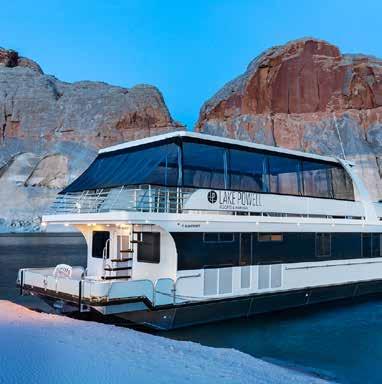

monuments and more than 20 scenic byways. The hotel features an outdoor pool, lounge patio seating with fire pits, and a signature restaurant, Prickly Pear Kitchen, serving Southwestern-inspired cuisine. Their prickly pear margarita — crafted with Espolon tequila, triple sec, prickly pear puree, citrus sour and black lava salt—provides the perfect refreshment after a day on the water.
Adventure outfitters in Page offer various excursions, including paddle boarding trips with Big Orange Jeep Tours and Rentals. Their equipment includes life jackets and iRocker inflatable stand-up paddleboards, perfect for exploring the lake’s calm waters. For those seeking land-based adventures, Ken’s Lower Antelope Canyon Tours provides guided treks through one of the world’s most photographed slot canyons, led by knowledgeable Navajo guides who share the area’s geology and cultural history.
Lake Powell’s vast expanse contains numerous landmarks and destinations worthy of exploration. Rainbow Bridge, located in the Utah section of the lake, ranks among the most impressive. This natural sandstone arch, sacred to Native Americans for thousands of years, is accessible by boat or by a permit-required hike from the Rainbow Bridge Recreation Area dock.
Other must-visit destinations include:
• Antelope Canyon — This photogenic slot canyon requires a Navajo guide to visit. Summer is the ideal time when high sun angles create dramatic light beams piercing through the narrow openings to illuminate the canyon floor.
• Face Canyon — This narrow passage in the Utah portion of the lake offers perfect conditions for kayaking and paddleboarding through towering red rock walls.
• Gunsight Canyon — Just a couple of hours by houseboat from Wahweap Marina, this area features 2 miles of sandy beaches perfect for swimming and shoreline relaxation. The distinctive Gunsight Butte, resembling the sight of a gun, makes this spot easy to locate.
• Navajo Canyon — Lake Powell’s longest side canyon invites visitors to disembark and hike among copper-hued rocks to discover ancient petroglyphs.
• Padre Bay — This 9-mile-long expanse contains hidden coves and swimming holes, as well as iconic viewpoints featuring Cookie Jar Butte, Tower Butte and Boundary Butte.
• West Canyon — Known as one of the Colorado Plateau’s premier adventures, this narrow slot canyon requires scrambling, wading and swimming to navigate fully. Though challenging, the journey rewards visitors with breathtaking scenery.
For those interested in backpacking and camping, Escalante and Orange Cliffs provide excellent options for rugged adventure. Their steep canyons and pristine wilderness create an ideal backdrop for outdoor exploration. Visitors can obtain information about these areas, along with details about day hikes and other attractions, from several visitor centers throughout the recreation area.
The drive to Wahweap Marina in Page from Phoenix takes approximately four to five hours. The route follows Interstate 17 north to Flagstaff, then Interstate 40 east to U.S. Route 89 north. After passing over Glen Canyon Dam in Page, continue to mile marker 550 and turn right into Wahweap South Entrance at Glen Canyon National Recreation Area. An entrance fee or National Parks pass is required.
Whether visiting for a day trip or an extended vacation, Glen Canyon National Recreation Area delivers an unmatched combination of natural splendor and recreational opportunities. The juxtaposition of azure waters against dramatic red rock formations creates a visual feast, while the area’s rich human history adds depth to the experience. From houseboating on Lake Powell to exploring ancient slot canyons, this remarkable destination offers memories that will last a lifetime.
nps.gov/glca lakepowell.com
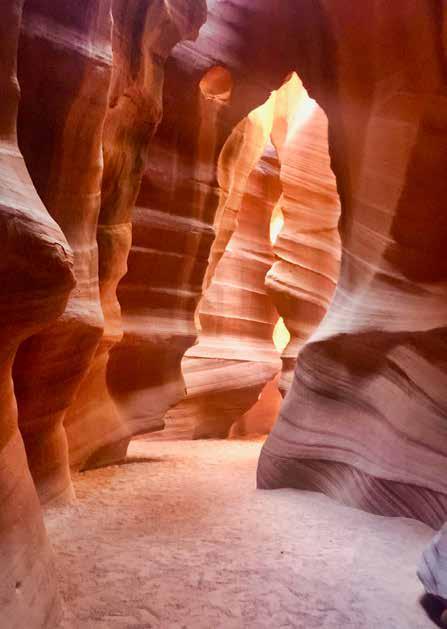


FFrom African safaris to native wildlife sanctuaries, Arizona’s zoos and wildlife parks bring the world’s most fascinating creatures right to your backyard. Discover eight extraordinary animal destinations where desert landscapes and pine forests become home to exotic species from across the globe.
Just west of Tucson, this 98-acre oasis blends the best of a zoo, botanical garden, natural history museum, aquarium and art gallery. Home to more than 240 animal species and 1,200 types of plants native to the Sonoran Desert region, the museum offers a unique outdoor experience with 2 miles of walking paths through desert habitats. Popular exhibits include bobcats, ocelots, mountain lions and Mexican gray wolves. Two walk-in aviaries and the seasonal Raptor Free Flight program offer spectacular bird encounters. Children can dig for fossils or explore the Packrat Playhouse, while adults enjoy the museum’s extensive mineral collection and 10,000-square-foot art institute.
desertmuseum.org


Tucked away in the heart of Tucson, this 24-acre wildlife haven houses more than 500 animals from various regions of the world. The Expedition Tanzania area, featuring one of the best zoo elephant habitats, offers various viewing opportunities of the elephant herd’s daily activities. Beyond iconic species like African elephants and reticulated giraffes, visitors can marvel at lesser-known animals including giant anteaters, capybaras and Andean bears. Daily zookeeper talks provide fascinating insights into the animals’ care and conservation.
reidparkzoo.org
This 104-acre preserve in Camp Verde brings visitors an authentic African safari experience in the heart of Arizona. Founded in 1988 by Dean and Prayeri Harrison, the park is dedicated to providing spacious natural habitats for its residents, many of which are rescues. Signature experiences include the African Bush Safari, Tiger Splash show and Predator Feed, where visitors can witness big cats in action. The park’s conservation efforts focus on education and creating meaningful connections between humans and animals.
outofafricapark.com

Nestled in the cool pines of Prescott, this nonprofit sanctuary specializes in rescuing and rehabilitating native and exotic animals that cannot be released back into the wild. Visitors can enjoy close encounters with mountain lions, black bears and Mexican gray wolves while learning about conservation. The sanctuary features a covered picnic pavilion, children’s playground and the famous Tarantula Grotto—one of the largest public displays of spiders in the country. Special experiences include keeper talks and seasonal after-hours flashlight tours.
heritageparkzoo.org
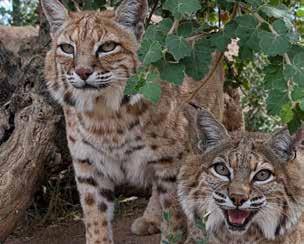
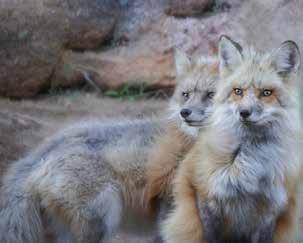
Located along historic Route 66 in Valentine, this accredited nonprofit rescue sanctuary has protected abused, neglected and abandoned wildlife for more than 30 years. Founded by former Las Vegas illusionist Jonathan Kraft, the sanctuary provides 175 acres of natural habitat for more than 140 rescued animals spanning nearly 40 species. Visitors can join three daily guided safari tours, with the 3:30 p.m. feeding tour being particularly popular.
keepersofthewild.org
Located in Williams, this unique drive-through wildlife park allows visitors to view North American animals in natural habitats from the comfort of their vehicles. The 3-mile drive showcases wolves, bison, bighorn sheep, and the park’s namesake black bears. For a closer experience, the Fort Bearizona walking area features additional exhibits including otters, beavers, and the popular jaguar habitat. Daily birds of prey shows highlight the aerial skills of hawks, owls and falcons against the backdrop of northern Arizona’s pine forests.
bearizona.com


This charming 10-acre animal wonderland on historic Route 66 near Williams offers a hands-on experience unlike any other wildlife attraction in Arizona. Visitors can walk among and feed gentle deer that eagerly approach for treats, while more adventurous guests might find themselves kissing a camel or chatting with Mozart the umbrella cockatoo. The farm also houses wallabies, coatis and other exotic creatures in an intimate, family-friendly setting perfect for visitors of all ages.
deerfarm.com
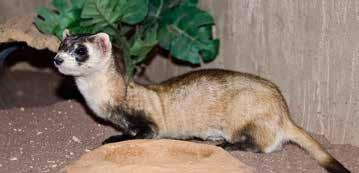
The only Native American-owned zoo in the U.S., this hidden gem in Window Rock offers a unique sanctuary for native wildlife and a fascinating glimpse into Navajo culture. What began with a single orphaned black bear in the 1960s has grown to house more than 100 animals representing 50 different species, most found injured or orphaned in the Southwest. The Golden Eagle Sanctuary and Education Center, opened in 2016, allows visitors to view these majestic birds up close while providing molted feathers for Navajo ceremonial purposes. The zoo also showcases endangered species such as the black-footed ferret and Mexican gray wolf.
navajozoo.org



Writer Joseph J. Airdo //
SSummer in Arizona unfolds like a magnificent tapestry when viewed from above. The familiar becomes extraordinary, and what we think we know about our state transforms into something entirely new when seen from an aerial perspective. While ground-level explorers navigate trails and highways, discovering Arizona from above reveals patterns, textures and colors that remain hidden to the earthbound traveler.
The dramatic diversity of our state’s topography becomes most apparent when viewed from the sky. From the undulating terrain of the northern regions to the striking geology of central Arizona, each area tells its own unique story — one that can only be fully appreciated when seen from a bird’s-eye view. Summer travel across Arizona’s varied landscapes reveals a state of striking contrasts: vermilion cliffs against azure skies, emerald waterways cutting through golden terrain, and the complex geometry of human settlements nestled within nature’s grand design.
Through the remarkable drone photography of Anthony Giammarino, Images Arizona invites readers on an aerial journey across the state’s diverse regions beyond the Phoenix metropolitan area. This two-part summer photo essay series captures the essence of Arizona’s exterior destinations as they’ve rarely been seen before — hovering at that perfect altitude where both the majesty of the landscape and its intricate details are simultaneously revealed.
Giammarino, whose passion for drone photography has taken him to virtually every corner of Arizona, has a unique ability to capture our state’s distinctive character from above. Having relocated to Arizona from New York in 2018, he brings an outsider’s appreciation combined with a local’s intimate understanding of what makes our state extraordinary. His work invites us to see familiar landmarks and hidden gems with fresh eyes — the way a soaring bird might experience them.
As you embark on your own summer travels, let these images inspire you to experience the ascent and appreciate Arizona’s remarkable beauty from every possible angle.

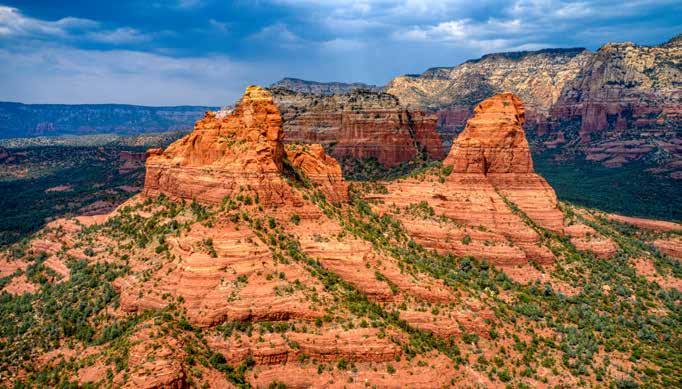

The Montezuma Well in Rimrock harbors five species found nowhere else on Earth: a diatom, a springsnail, a water scorpion, an amphipod and a leech — all thriving in water containing high levels of arsenic that would be lethal to most organisms.

Just one year after opening in 1970, Sunset Point Rest Area gained national fame as America’s “outstanding safety rest area” and was even featured on Pittsburgh television as a model for Pennsylvania to emulate.

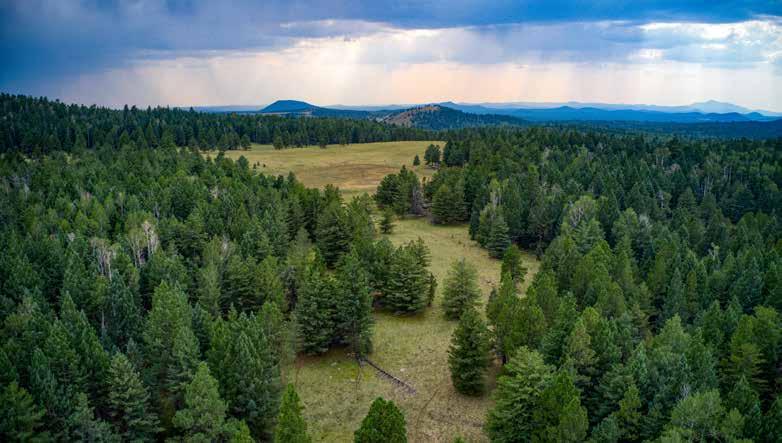

Anthony Giammarino discovered his passion for visual storytelling at an early age, but it was drone photography that truly ignited his creative vision. Born and raised in Binghamton, New York, Giammarino found himself increasingly drawn to Arizona’s distinctive landscapes during visits to family and friends. In 2018, after being captivated by the state’s extraordinary beauty from an aerial perspective, he made the life-changing decision to relocate to Phoenix.
Founding Airobird Drones, Giammarino initially focused on real estate photography while exploring Arizona’s diverse regions with his drone. What began as weekend adventures quickly evolved into a passionate pursuit to capture the state’s remarkable diversity from above. His unique perspective — hovering at lower altitudes than traditional aerial photography — reveals details and patterns invisible from both ground level and high-altitude aircraft.
While his commercial work keeps him busy, Giammarino’s true passion lies in revealing Arizona’s exterior regions through his Instagram account @AntsDrone. His aerial explorations have taken him from the red rocks of Sedona to the canyons near Flagstaff, from the riparian corridors along the Verde River to the distinctive formations surrounding Prescott. Each expedition reinforces his belief that Arizona offers unparalleled opportunities for drone photography.
“Arizona reveals itself completely differently from the air,” Giammarino explains. “Colors become more vivid, patterns emerge from seemingly random landscapes, and you begin to understand how everything connects in ways you simply can’t see from the ground.” airobird.com
AArizona is home to one of the Seven Natural Wonders of the World and the only one located in North America. The colossal Grand Canyon stands as the most recognized canyon and one of the most recognizable land formations globally.
Each year, nearly 5 million visitors come to experience its breathtaking grandeur and feel the timelessness of this spectacular landmark. The 277-mile-long chasm plunges to an average 1 mile deep and stretches to 18 miles across at its widest points.
Though debate continues over just how the Grand Canyon was formed, the most commonly held belief is that erosion from the Colorado River carved its way through the strata over a period of 4 to 6 million years, revealing layer upon layer formed over nearly 2 billion years.
For the casual observer, it doesn’t really matter how the canyon came to be; its rugged character and sheer vastness are enough to render visitors speechless. Shadows shift from moment to moment, altering the palette of red and purple hues that mix with sandstone, shale and limestone.

In the supreme flaming glory of sunset, the whole canyon is transfigured, as if the life and light of centuries of sunshine stored up in the rocks was now being poured forth as from one glorious fountain, flooding both earth and sky. John Muir

The Grand Canyon was home to many Native Americans long before pioneers heading westward discovered its beauty. Ancient Puebloans, or Anasazi, are believed to have occupied the area first, as well as the Cohonina, who were ancestors of the Yuman, Havasupai and Hualapai peoples who inhabit the area today. The Sinagua people lived on land southeast of the Grand Canyon, between the Little Colorado River and the Salt River, and are believed to be the early ancestors of several Hopi clans.
Then the Europeans came, but the seldom-told story of what happened next is a victory in the annals of Native American history. In September 1540, conquistador Capt. Garcia Lopez de Cardenas and his small group of men traveled with a group of Hopi guides to the South Rim of the Grand Canyon between Desert View and Moran Point. They were in search of the mythical Seven Cities of Cibola and hidden gold.
The men descended a section of the canyon but were forced to return when they ran out of water. They never did return, and the Hopis likely celebrated this significant triumph. Unknown to the conquistadors, the Hopis frequently traversed the canyon to obtain access to the river and surely knew safe, accessible ways to get there. Their cunning paid off; Europeans did not return to the Grand Canyon for another 200 years.
A handful of adventurers with a variety of motivations for visiting the canyon came to explore it in the late 18th and 19th centuries. In 1869, one-armed Civil War hero Maj. John Wesley Powell, namesake of Lake Powell, led the first recorded expedition through the Grand Canyon. With nine men and four wooden boats, he set out from Green River, Wyoming, and traveled approximately 1,000 miles down the Colorado River, eventually reaching the mouth of the Virgin River (now submerged beneath Lake Mead). Two years later, Powell dubbed the landmark the Grand Canyon, and the name stuck.
Environmentalist, adventurer and author John Muir spent time exploring the canyon and remarked, “It seems like a gigantic statement for even Nature to make all in one mighty stone work. Wildness so Godful, cosmic, primeval, bestows a new sense of Earth’s beauty and size … But the colors, the living, rejoicing colors, chanting morning and evening in chorus
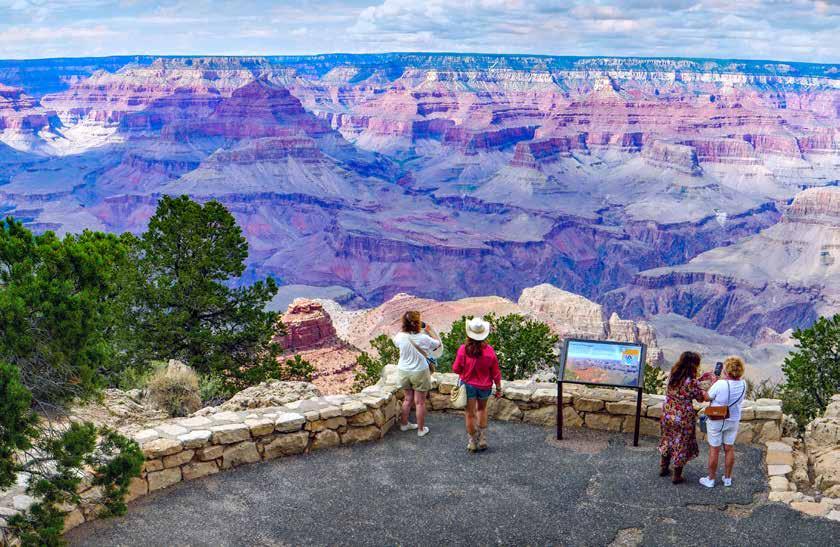
to heaven! Whose brush or pencil, however lovingly inspired, can give us these? In the supreme flaming glory of sunset, the whole canyon is transfigured, as if the life and light of centuries of sunshine stored up in the rocks was now being poured forth as from one glorious fountain, flooding both earth and sky.”
In 1882, the railroad forged a path along the Grand Canyon. The Santa Fe Railroad first came through based on a collective hunch that, with all of the color and layers in the canyon, surely mineral riches would be found. Those betting their lives on it lost plenty, but when railroad officials began billing the canyon as an exciting stop along the way to the gentle climates of California, tourists began to flock to the area. Twenty years later, automobiles would become the main form of transportation, bringing families and thrill-seekers to the Grand Canyon.
Perhaps the most dedicated outdoorsman in presidential history, President Theodore Roosevelt visited the Grand Canyon with Muir in 1903. An avid hunter and conservationist, he established the Grand Canyon Game Preserve with the best of intentions in 1906. As a result, predators such as mountain lions, eagles and wolves were eradicated, which, in hindsight, may not have been the most ideal plan for land management.
In 1908, Roosevelt went a step further, designating the canyon and surrounding forest lands a U.S. national monument. He wanted to reclassify it as a national park, but landowners and mining claim holders stalled the process for 11 years. President Woodrow Wilson was finally able to urge legislation through, and Grand Canyon National Park was established in 1919.
“The Grand Canyon fills me with awe,” Roosevelt declared. “It is beyond comparison — beyond description; absolutely unparalleled throughout the wide world … Let this great wonder of nature remain as it now is. Do nothing to mar its grandeur, sublimity and loveliness. You cannot improve on it. But what you can do is to keep it for your children, your children’s children, and all who come after you, as the one great sight which every American should see.”
Today, visitors from around the world make pilgrimages to experience the Grand Canyon’s timeless majesty. The South Rim is open year-round, weather permitting. The North Rim is generally open mid-May to midOctober.
In 2007, the Hualapai Tribe unveiled a remarkable man-made feat that both embraces the canyon’s beauty and reveres its boldness. The Grand Canyon Skywalk, a transparent horseshoe-shaped cantilever bridge and tourist attraction some 500 to 800 feet above the canyon floor, was commissioned by the tribe in an effort to attract muchneeded tourism dollars. Located on Hualapai tribal land at Grand Canyon West, the Skywalk can be reached via Grand Canyon West Airport or by driving approximately 120 miles from Las Vegas.
The Hualapai and other Native American communities that surround the Grand Canyon work diligently to maintain their ancient cultures and traditions amid urbanization, globalization and a local economy centered on tourism. Since the 1880s, outposts for jewelry and other crafts have provided both

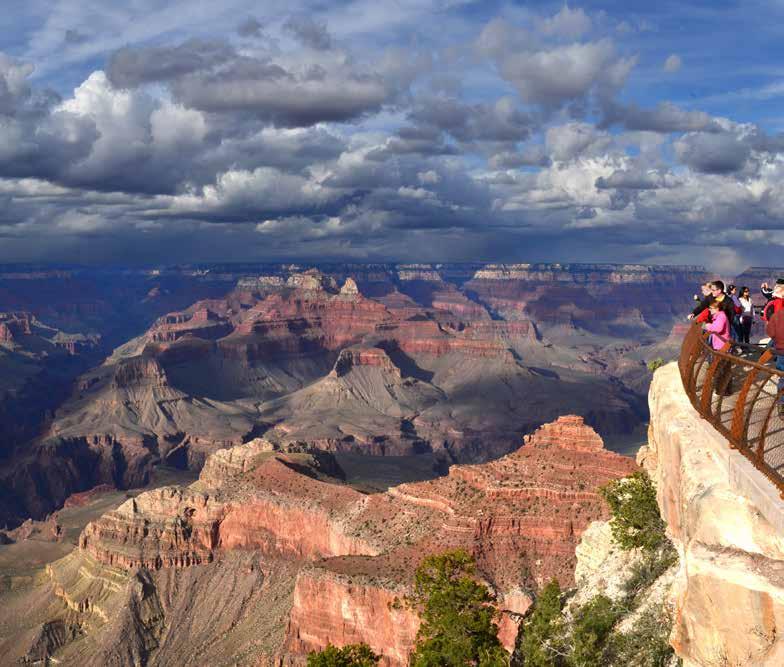


income and awareness of the importance of Native traditions. Today, these venues preserve cultural heritage while serving as some of the most popular sources of Native American handicrafts in the world.
Wildlife and botanical life are preserved in the Grand Canyon: an estimated 89 species of mammals, 17 species of fish, 355 species of birds, 47 species of reptiles and amphibians, and 1,500 species of flowering plants.
These species are protected in these special lands, and the National Park Service hopes to provide stewardship for the ecology and everything reliant on it for centuries to come. It is a continuing challenge to maintain the delicate balance often threatened by the impact of humans.
The Grand Canyon Railway was brought back to life in 1989, more than 20 years after it last traversed the beautiful South Rim. Today, it remains the only railroad operating in a national park in the United States. Though its mission has changed since its early 20th-century purpose, its significance remains.
Visitors can now experience the anticipation and excitement that generations of Americans — including many of their grandparents and great-grandparents — felt when trains first chugged through pine forests, high desert and along the breathtaking ridgelines of the canyon itself. As in days gone by, passengers get off at the Grand Canyon Depot next to the El Tovar Hotel, built by the railroad in 1905.
For those planning a summer visit, advance reservations are highly recommended for lodging within the park. The South Rim offers a range of accommodations, from the historic El Tovar to more modest options at Bright Angel Lodge. For the adventurous, backcountry permits allow for a more intimate canyon experience, though these must be secured months in advance.
Whether you’re capturing the perfect sunrise at Mather Point, hiking the popular Bright Angel Trail or simply contemplating the vastness from a quiet overlook, the Grand Canyon offers an experience that transcends time — a fitting reminder of both nature’s grandeur and our responsibility to preserve it for future generations.
nps.gov/grca

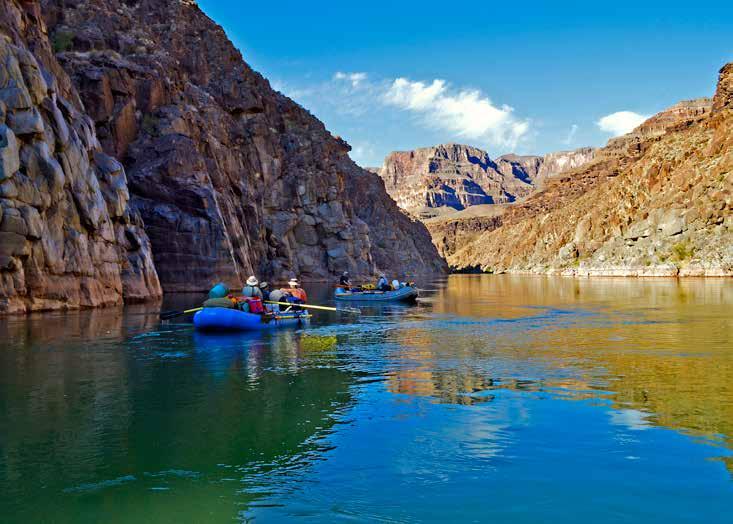
IImagine floating through the heart of the Grand Canyon, towering rock walls rising thousands of feet above as you navigate churning rapids and discover hidden treasures inaccessible by land. For adventure-seekers, rafting the Colorado River offers an unparalleled perspective of one of America’s natural wonders.
“The Grand Canyon is an amazing trip,” says Dean Knuth, marketing director for Arizona River Runners. “Most people who take one of our trips have never been rafting before, and a subset of those have never been camping before. They really want to push themselves to do something amazing.”
More than a dozen river outfitters are licensed to offer rafting trips through the Grand Canyon. Tours depart from Lees Ferry, the official beginning of Grand Canyon National Park, and take guests as far as 280 miles alongside towering rock walls; through whitewater rapids; and past waterfalls, hidden caverns and ancient Puebloan dwellings. Food, sleeping amenities and safety gear are provided, but there is no internet service, and the bed is a sleeping bag in a tent or on the beach.
The journey offers far more than just river running.
“There are some really amazing things to see and do,” Knuth notes. “We try to do one or two daily side hikes on every trip.”
Popular attractions include Redwall Cavern, a massive amphitheater-style cave that American explorer John Wesley Powell once said “would give seating to 50,000 people,” and the Nankoweap Granaries, 1,000-year-old Puebloan storage structures carved high on a cliff.
Visitors also discover hidden waterfalls, fossilized nautiloids from 400 million years ago, and in spring, the brilliant turquoise-hued pools of the Little Colorado River.
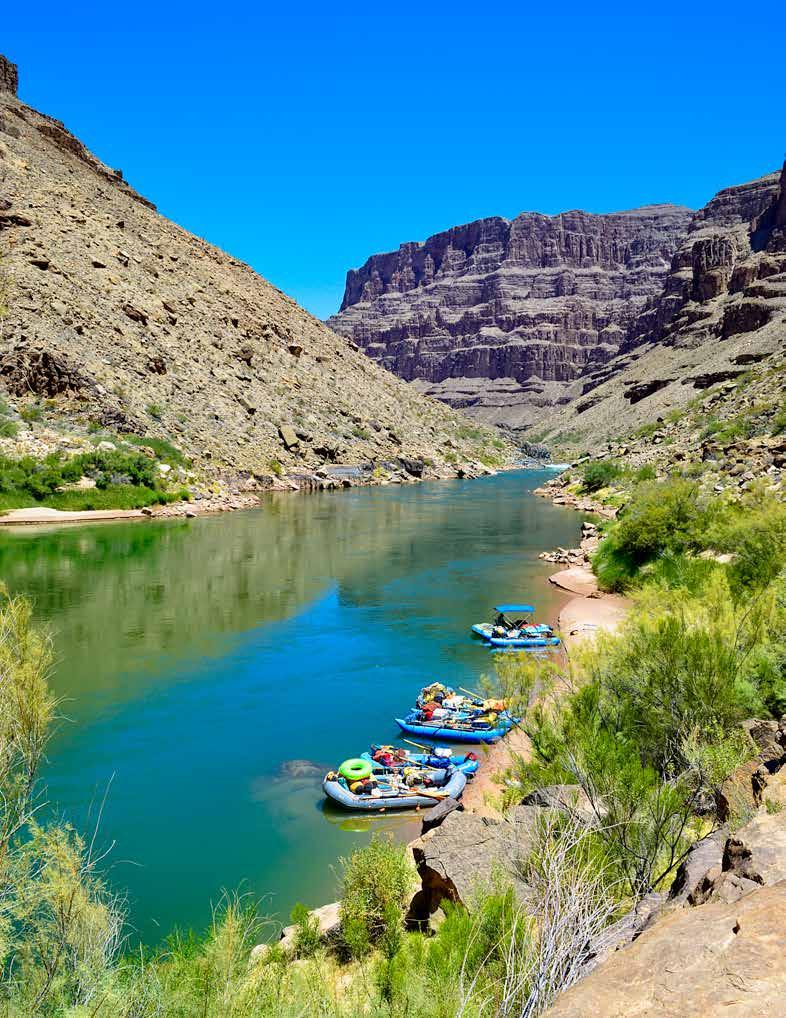
The most notorious challenge is Lava Falls Rapid. Rated 9 out of 10 in difficulty, the 20-second run is brief but terrifying as rafts bob like toys through churning waves.
For many adventurers who have previously hiked the Grand Canyon’s trails, rafting offers a completely different perspective. Seeing the canyon from below while snaking along the river reveals connections between iconic landmarks like Bright Angel, Phantom Ranch, Havasupai and the North Rim that aren’t apparent from above. Though immensely rewarding, the journey challenges travelers to step far outside their comfort zones.
Heat, scorpions, rattlesnakes and constantly being wet are just some of the discomforts of the trip. And while most of the river is smooth, some whitewater rapids can churn up large — and dangerous — waves.
The guides’ primary job is ensuring safety through serious rapids, and while the adventure doesn’t require peak physical fitness, it does demand courage, an open mind and readiness for the unexpected.
The most notorious challenge is Lava Falls Rapid. Rated 9 out of 10 in difficulty, the 20-second run is brief but terrifying as rafts bob like toys through churning waves.
Despite hosting approximately 20,000 rafters annually, outfitters maintain impeccable environmental standards.
“We pack up every little piece of microtrash,” Knuth emphasizes. “When we pull away from a campsite, it looks exactly like it did when we pulled in.”
Those who complete the journey often describe it as transformational — a unique fellowship that provides a profound sense of accomplishment. Rafters return with shifted perspectives, having confronted their fears, committed fully to the adventure, and conquered an endeavor few will ever attempt.
raftarizona.com

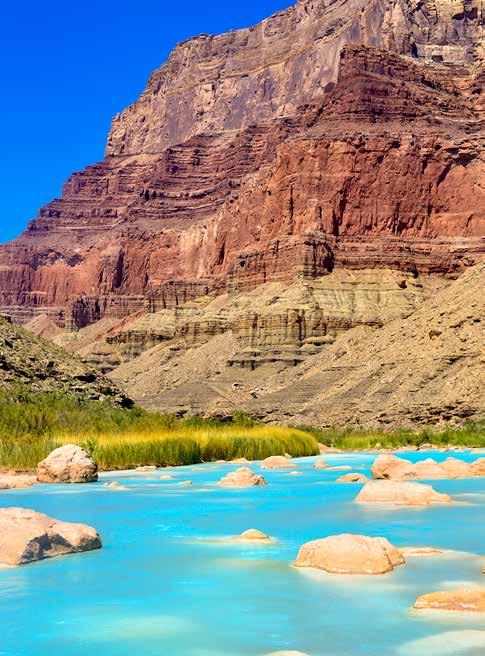

AArizona’s museum scene is as diverse as its stunning landscapes, featuring both world-renowned institutions and hidden gems that showcase the state’s rich history and vibrant culture. Discover 10 extraordinary museums where curious minds can explore everything from miniature marvels to Cold War relics, offering glimpses into Arizona’s lesser-known stories and passions.
Housed in a historic 113-year-old building in the charming border town of Douglas, this unique museum boasts the world’s largest collection of Last Supper art and related items. The collection represents artistic traditions from every continent except Antarctica and began with curator Eric Braverman’s lifelong passion, expanding when he acquired the 50-year-old collection from the Last Supper Museum in Greensburg, Indiana. Visitors can marvel at more than 650 pieces on display, with an additional 2,000 stored in the vault. The museum’s crown jewel is a nearly 30-foot outdoor art display created by local artist Adolpho “Wacho” Garcia on recycled corrugated metal, designed to match the dimensions of Leonardo da Vinci’s iconic painting in Milan.
lastsuppermuseum.com


Nestled in the foothills of the Santa Catalina Mountains, this 10-acre national historic district was designed and built by acclaimed Arizona artist Ettore “Ted” DeGrazia from 1951 to 1965, with help from his Yaqui and Tohono O’odham friends. The property features a mine entrance-inspired doorway with copper ore, an awe-inspiring cholla cactus floor, and six permanent collections of paintings that trace the historical events and Native cultures of the Southwest. Rotating exhibitions showcase some of the 15,000 DeGrazia originals, including oils, watercolors, sketches, sculptures, ceramics and jewelry, while a stunning life-size bronze of the Yaqui deer dancer graces the courtyard.
degrazia.org
Housed in a former hardware store in Tucson, this dazzling museum showcases vintage signs and neon art that illuminate Arizona’s vibrant roadside history. Founded by veteran sign restorer Jude Cook, who has saved 26 of Tucson’s iconic neon landmarks over four decades, visitors can marvel at mesmerizing displays dating back more than 75 years, including the recently restored midcentury atom from the Mr. Quick Hamburger sign, the 17-foot Arby’s hat and the rotating 76 ball. Beyond visual treats, the museum offers interactive displays, scavenger hunts and live neon-bending demonstrations where artisans shape glass tubes into glowing masterpieces. For a special experience, check out the popular “Ignite at Night” events, when the museum opens after hours to celebrate newly restored signs.
ignitemuseum.com
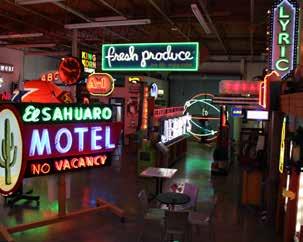
The Mini Time Machine Museum of Miniatures in Tucson transports visitors through time and space via more than 500 meticulously crafted miniature houses and roomboxes. Founded by Patricia and Walter Arnell, this enchanting space showcases everything from antique dollhouses dating to 1742 to contemporary fine-scale miniatures created by artists from around the world. Popular exhibits include a miniature bookstore featuring more than 1,500 handmade tiny books and a miniature weaving studio with a fully functional, four-harness loom complete with an in-progress tapestry.
theminitimemachine.org


Located on the historic Tucson Rodeo Grounds, this unique museum featured on PBS’ “Antiques Roadshow” offers a fascinating journey into Arizona’s transportation history. The facility houses more than 100 horse-drawn carriages and wagons across four buildings, alongside displays in the historic hangar from America’s first municipally owned airport. The collection began in 1925 when the Tucson Rodeo Parade Committee started collecting wagons for its annual parade. The museum’s standout exhibit is Emperor Maximilian of Mexico’s luxury coach — commissioned by Napoleon, built in Paris and restored by an Amish wagon builder. Other noteworthy pieces include Tucson’s first fire wagon, the police department’s jail wagon and Sabino Otero’s buggy.
tucsonrodeoparade.com/the-museum
Train enthusiasts of all ages will delight in this Tucson gem that began as a modest club of 25 people in 1980 and has grown to include more than 130 members. The nonprofit museum features multiple operating toy train layouts in a variety of gauges, from tiny Z scale to garden-sized G scale trains, all set in meticulously detailed landscapes. What makes this museum particularly special is its interactive nature — visitors can operate the trains and accessories themselves by pushing buttons located throughout the 6,000-square-foot display area. The museum regularly hosts special events, including swap meets and seasonal holiday displays that bring the magic of model railroading to life.
gadsdenpacific.org
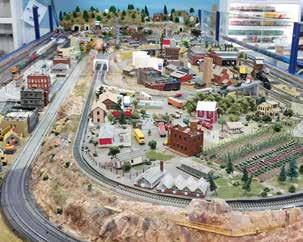


Located on the University of Arizona campus in Tucson, this museum houses more than 10,000 historical artifacts that trace the evolution of pharmacy from ancient times to the present day. Originally established in 1966 with pharmacist Jesse Hurlbut’s personal collection, it was renamed and relocated in 2022 thanks to alumnus R. Ken Coit’s generous support. The museum’s crown jewel is the prestigious Upjohn Pharmacy collection from Disneyland’s Main Street, U.S.A. (1955-1970), featuring authentic pharmaceutical antiques from around the world. Other highlights include notorious gangster John Dillinger’s chewing gum, collected from Tucson’s Owl Drug Store in 1934, and the Dr. Mary Estill Caldwell collection honoring a pioneering woman in Arizona’s health science history.
museum.pharmacy.arizona.edu





Housed in a former high school in Clarkdale, this 2014 Governor’s Tourism Award winner showcases Arizona’s copper mining heritage through an impressive collection of more than 5,000 copper art pieces and artifacts. Visitors can explore centuries of copper craftsmanship with pieces dating back to the 16th century, revealing the metal’s significance in art, military history, kitchenware and architectural elements. The museum’s comprehensive exhibits highlight Arizona’s position as a global copper producer and demonstrate how this versatile metal has shaped the state’s economy and cultural legacy.
arizonacopperartmuseum.com


Located in Williams, this unexpectedly fascinating museum is dedicated entirely to coprolites — fossilized dinosaur poop. Founded by Guinness World Record holder George Frandsen, the Poozeum blends natural history, art gallery and carnival sideshow aesthetics to create a uniquely educational experience. The collection features thousands of authentic specimens from around the world, including “Barnum,” the world’s largest carnivorous coprolite, and a 4-foot-wide titanosaur poop replica. Visitors can snap selfies with “The Stinker,” a bronze Tyrannosaurus rex on a toilet, marvel at vibrant hand-painted banners and browse a quirky gift shop filled with dino-themed treasures. Equal parts scientific and irreverent, this free attraction offers an unforgettable glimpse into prehistoric biology.
poozeum.com
Step into a surreal world of movement and imagination at this Tucson museum, home to nearly 100 animated sculptures crafted from everyday objects by artist Ned Schaper, aka Mat Bevel. Each piece is a whimsical contraption brought to life through pulleys, levers and found materials, blurring the line between art and machine. Highlights include “The Blood Vessel,” a shiplike creation piloted by Schaper’s alter ego, and the fog-belching “Energy Plant.” Unlike traditional museums, visitors are encouraged to interact with many of the pieces, activating their kinetic elements. The museum regularly hosts performances and hands-on demonstrations where creativity is literally set in motion, offering an immersive experience where discarded objects find new purpose as mechanical art.
matbevelcompany.org

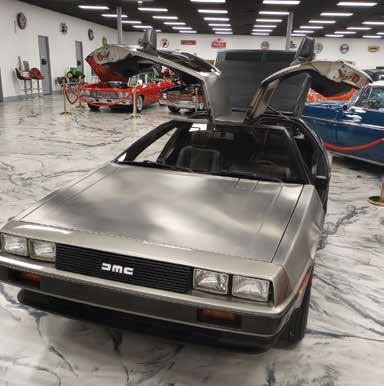



Arizona’s automotive heritage comes alive in seven remarkable museums preserving the vehicles, innovations and stories that shaped the Southwest.
• Franklin Auto Museum (Tucson) preserves the legacy of Franklin’s air-cooled automobiles with more than 25 classic models housed in a historic adobe home. Highlights include two time capsules — a 1910 model and 1924 model with the lowest original mileage remaining. franklinmuseum.org
• Rolling Thru Time Auto Museum (Tucson) showcases 225 vehicles spanning four generations of family collecting, featuring a recreated vintage Ace Hardware store, Model T assembly line and displays enriched with family photographs. rttmuseum.com
• Tucson Auto Museum (Tucson) houses more than 75 roadworthy classics, including Hollywood vehicles from "Batman" and a 1929 Duesenberg Model J, plus "The Batcave" display with two Batmobiles. tucsonautomuseum.org
• JWJ Cycles Museum (San Manuel) celebrates a family’s two-wheeled passion through 100 motorcycles and serves as an active hub where riders can stage trips, stay overnight and participate in events. jwjcycles.com
• Dwarf Car Museum (Maricopa) displays Ernie Adams’ handcrafted, scaled-down replicas of classic cars, including his first 1965 creation “Grandpa Dwarf.” Most surprising is that eight of these miniatures are street-legal and can reach highway speeds. dwarfcarmuseum.com
• Art Car World (Douglas) showcases 42 vehicles transformed into mobile art pieces by owner Harrod Blank and fellow artists. Signature pieces include “The Carthedral” and Blank’s “Camera Van,” with custom tours available. artcarworld.org
• Arizona Route 66 Museum (Kingman) offers two experiences in one: a journey through the Mother Road’s evolution and the world’s first museum dedicated to electric vehicles, featuring a Tesla Roadster II. mohavemuseum.org

Writer and Photographer Francine Coles
As you embark on your summer travels across Arizona’s diverse landscapes, these elegant roasted cherry tomato and whipped feta toasts make for the perfect portable picnic companion or a sophisticated starter after a day of exploration. The contrast of creamy, tangy whipped feta against sweet, bursting roasted tomatoes creates a Mediterranean-inspired dish that complements our state’s sun-drenched bounty. Whether enjoyed on a scenic overlook in Sedona or as an appetizer before dining out in Flagstaff, these beautiful bites capture the essence of summer entertaining.
Directions:
Yield: 20 toasts
Ingredients:
For the Roasted Cherry Tomatoes:
2 tablespoons extra-virgin olive oil
2 tablespoons unsalted butter, melted
1 pound cherry tomatoes
3 garlic cloves, smashed
3 thyme sprigs
Kosher salt and freshly ground black pepper, to taste
For the Whipped Feta:
6 ounces crumbled feta
2 ounces Parmesan cheese, freshly grated
1/3 cup whole milk
1 teaspoon fresh lemon zest
Kosher salt and freshly ground black pepper, to taste
For Assembly:
1 French baguette, sliced into 1-inch-thick pieces on the diagonal
Extra-virgin olive oil, for drizzling
Freshly grated Parmesan cheese, for garnish
Fried basil leaves or thinly sliced fresh basil, f or garnish
Preheat oven to 375 degrees. In a shallow baking dish, combine olive oil, melted butter, cherry tomatoes, garlic and thyme. Roast for 20 to 22 minutes or until tomatoes are soft and bursting. Remove from oven, season with salt and pepper, and set aside.
Place feta, Parmesan, milk and lemon zest into a food processor. Season with salt and pepper to taste. Process mixture until completely smooth and creamy.
Place baguette slices on a baking sheet and drizzle with olive oil. Toast in the oven for 6 to 8 minutes or until lightly golden.
To assemble, spread a generous amount of the whipped feta over each toast. Using a slotted spoon, top with several roasted tomatoes. Finish with a light sprinkle of freshly grated Parmesan cheese and a few fried or thinly sliced fresh basil leaves. Serve immediately.
thefancypantskitchen.com

